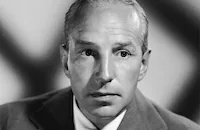The Girl Hunters
Brief Synopsis
Cast & Crew
Roy Rowland
Mickey Spillane
Shirley Eaton
Lloyd Nolan
Hy Gardner
Scott Peters
Film Details
Technical Specs

Synopsis
Private detective Mike Hammer has spent 7 years in alcoholic melancholy over the disappearance of Velda, his beloved secretary, when he is picked up out of the gutter by his former friend, New York Police Capt. Pat Chambers. The officer wants Hammer to question a dying sailor, Richie Cole. The seaman, who will talk only to Hammer, was shot with the same weapon that killed a noted U. S. senator several years earlier. Cole tells Hammer that the senator was assassinated by a communist spy ring masterminded by "The Dragon," but the private investigator refuses to relay this information to Chambers and is detained in a ward for alcoholics. After federal agent Art Rickerby explains that Cole was a fellow agent, Hammer agrees to cooperate and help bring the killer to justice. Armed with information supplied by syndicated newspaper columnist Hy Gardner, the investigator interviews Laura Knapp, the senator's flirtatious widow. Several other murders are committed, and Hammer begins to suspect Laura's complicity with the spy ring. Spurred on by the hope that Velda is still alive and imprisoned by "The Dragon," he tracks the assassin to a chicken farm, overcomes him, and nails his hands to the floor. Confronting Laura, he accuses her of conspiring with the communists to murder her husband. She fires a shotgun that Hammer secretly has rigged with a blocked barrel and kills herself.

Director

Roy Rowland
Cast

Mickey Spillane

Shirley Eaton

Lloyd Nolan
Hy Gardner
Scott Peters
Guy Kingsley Poynter
James Dyrenforth

Charles Farrell

Kim Tracy
Benny Lee
Murray Kash
Bill Nagy
Clive Endersby
Richard Montez
Larry Cross
Tony Arpino
Hal Galili
Nelly Hanham
Bob Gallico
Michael Brennan
Howard Greene
Grant Holden
Francis Napier
Larry Taylor
Crew
Rene Coke
Robert Fellows
Robert Fellows
Philip Green
Alice Holmes
Tony Inglis
Denis Johnson
Alan Mccabe
Dan Millstein
George Pollard
Charles Reynolds
Douglas Robinson
Jim Roddan
Roy Rowland
Mickey Spillane
Sidney Stone
Hugh Strain
Kenneth Talbot
Gerry Turner
Sydney Turner
Fred Turtle

Videos
Movie Clip



Film Details
Technical Specs

Articles
The Girl Hunters
Most people today, if they have heard of Mike Hammer, connect him to Robert Aldrich's classic film Kiss Me Deadly (1955) or the 1980's TV series starring Stacy Keach. However, during the 1950's, Mickey Spillane and Mike Hammer were very big indeed. Capitalizing on the post-World War II publishing phenomenon of the pocket-sized pulp paperback, Spillane provided the raw goods for this new kind of fiction. With lurid titles like My Gun Is Quick (1950) and Vengeance Is Mine! (1950) and even more lurid covers heavy on the disheveled dames and blazing handguns, Spillane's books tapped into the desire for heroes who could play as nasty as the villains. In Mike Hammer's world, the code of the fair fight had been destroyed by the horrors of the World War and the new battle against the sneaky Reds.
Many found Hammer's open bloodlust offensive and that disapproving attitude, shared by director Robert Aldrich, colored the most famous Mike Hammer film Kiss Me Deadly. Aldrich had Ralph Meeker play Hammer as a "real stinker" but it was not the way Spillane saw his character. Other Hammer movie adaptations came out as B-movies with the detective played by Biff Elliot in I, The Jury (1953) and Robert Bray in My Gun Is Quick (1957). Meanwhile, Spillane had been in one movie as an actor, playing himself in Ring of Fear (1954). That movie's producer, Robert Fellows, got the rights to Spillane's novel The Girl Hunters and, in 1963, decided to extend Spillane's range to that of lead actor, casting the 46-year old writer as his own creation.
Despite his familiarity with the story and the character, Spillane had a little difficulty being guided by a director. "The director says to me 'can you run?' I say, 'Yeah, what's happened?' He says 'can you run?' I say, 'Sure'. So we do the scene and I ran away from the camera. [Director] Roy Rowland says 'What're you doing!' I said, 'Tell me what you want, don't say 'can you run?'"
The production, although set in New York, was shot in London. Some of the actors who appear in this movie would go on to small roles in the early James Bond films but the most famous Bond-connection would go to Spillane's co-star and love interest Shirley Eaton, then a year away from being painted gold for Goldfinger (1964).
Variety said Spillane turned in "a credible job" playing Hammer but other critics were less kind. The effete class that reviewed books and movies were always of little concern to Spillane who, like his hero Hammer, took the knocks but kept on doing his job, doling out hard justice to commies and critics alike.
Director: Roy Rowland
Writers: Mickey Spillane, Roy Rowland, Robert Fellows
Producers: Robert Fellows, Charles Reynolds
Cinematographer: Kenneth Talbot
Music: Philip Green
Editor: Sidney Stone
Art Director: Tony Inglis
Cast: Mickey Spillane (Mike Hammer), Shirley Eaton (Laura Knapp), Lloyd Nolan (Art Rickerby), Hy Gardner (himself), Bill Nagy (Georgie), Hal Galili (Bouncer)
BW-98m. Letterboxed.
by Brian Cady

The Girl Hunters
Quotes
Trivia
Notes
Some location scenes filmed in London. Released in Great Britain in 1964; running time: 97 min. Reynolds is credited as producer in Great Britain; U. S. sources credit Fellows. FOr information on other films and television programs featuring the character "Mike Hammer," please consult the Series Index and see the entry for the 1953 film I, the Jury.

Miscellaneous Notes
Released in United States 1963
Released in United States 1963













